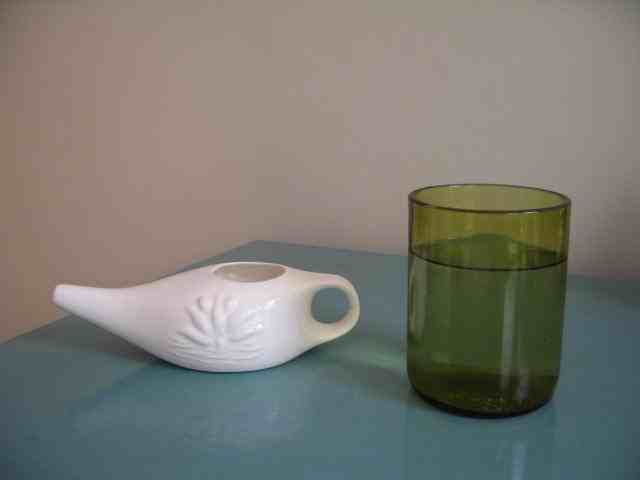Yoga Shatkarma
According to Hatha Yoga Pradipika (a 15th century text), Yoga practices must first begin with purifying the body - the stomach, intestines, and the nervous system. These practices were traditionally called "Yoga Shatkarmas" - 6 groups of various purification practices, each focusing on a different part of the body.
1. Neti
2. Dhauti
3. Nauli
4. Basti
5. Kapalabhati
6. Tratak
|
Two of the Yoga Shatkarmas are safe to start practicing on your own: Jala Neti and Tratak. You can find instructions below.
NETI, Cleansing of the nasal passages
A. Jala Neti
Jala Neti refers to cleansing the nasal passages with water and has been used by practitioners of Ayurveda and yoga for thousands of years.
A simple yet very powerful technique, Jala Neti works wonders for chronic sinusitis, and allergies. It has a remarkable effect on upper respiratory tract infections dislodging and washing out allergens, dust, and other pollutants. You will be surprised at how easy it is to perform.

Ideally, a neti pot should be used. A neti pot can be found at your local Whole Foods Market or a yoga studio.
First, make the saline solution: dilute a pinch of non-iodized salt in a glass of filtered body-temperature water. Pour the saline water into the Neti pot.
Over a sink, tilt the head forward and to the side so that one side of the nose is higher than the other. Insert the spout of the Neti pot into the upper nostril. Let the water run into the nostril, through the sinuses, and out the other nostril for a few seconds. Switch sides a couple of times.
A burning sensation indicates that too much salt was used, or the water is too cold or too hot. In between and after the rounds, blow the nose gently to cleanse any mucus. When finished, dry the nostrils with gentle Kapalabhati breathing, each nostril separately and then both at the same time.
B. Sutra Neti
This practice involves passing a specially prepared cotton-thread through the nose and out the mouth, back and forth a few times - flossing the nasal passages.
Do not try this practice without supervision of a trained yogi.
TRATAK - Candle-gazing to purify the eyes

Benefits: clears the eyes, improves eyesight, relieves nervous tension, anxiety, depression, and insomnia.
How to: Sitting in a meditation position, gaze steadily at the tip of the wick of a lit candle.
Try not to blink, or move the eyes in any way. Do not strain. Just keep a soft steady gaze.
The awareness should be so completely centered on the wick that body awareness is lost.
If the mind begins to wander, gently bring it back to the practice.
After 1-2 minutes, when the eyes begin to tire or to water, close them and gaze internally at the after-image until it begins to fade.
Repeat the practice once more.
Palm the eyes for a couple of minutes afterward.